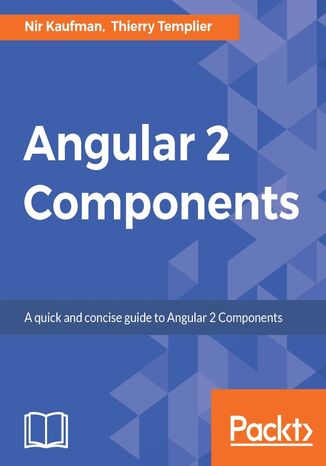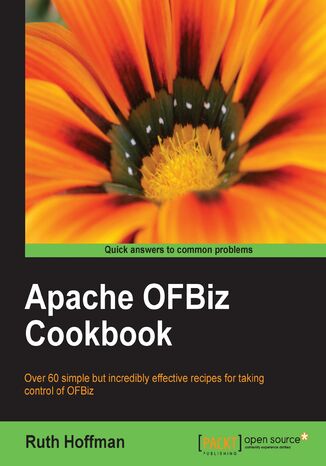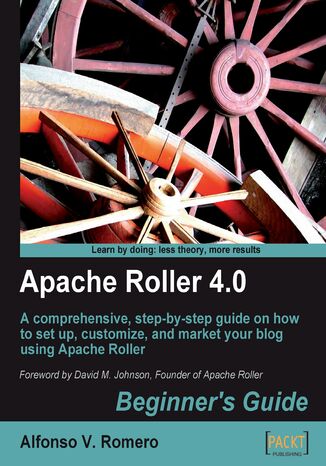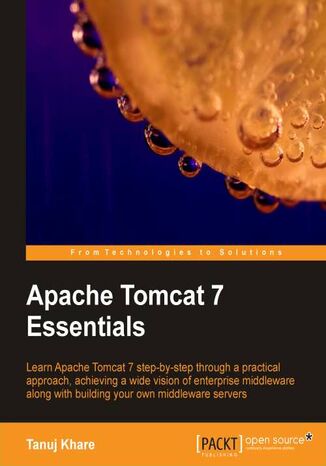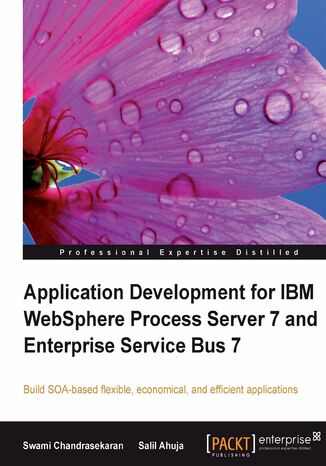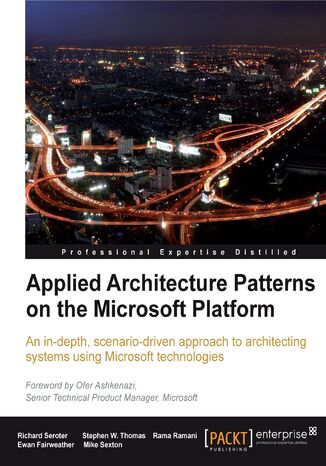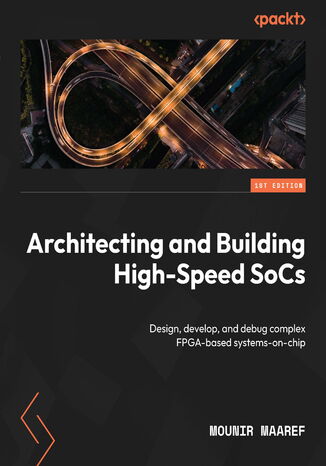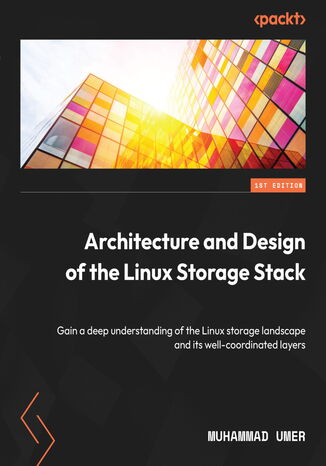Kategorie
Ebooki
-
Biznes i ekonomia
- Bitcoin
- Bizneswoman
- Coaching
- Controlling
- E-biznes
- Ekonomia
- Finanse
- Giełda i inwestycje
- Kompetencje osobiste
- Komputer w biurze
- Komunikacja i negocjacje
- Mała firma
- Marketing
- Motywacja
- Multimedialne szkolenia
- Nieruchomości
- Perswazja i NLP
- Podatki
- Polityka społeczna
- Poradniki
- Prezentacje
- Przywództwo
- Public Relation
- Raporty, analizy
- Sekret
- Social Media
- Sprzedaż
- Start-up
- Twoja kariera
- Zarządzanie
- Zarządzanie projektami
- Zasoby ludzkie (HR)
-
Dla dzieci
-
Dla młodzieży
-
Edukacja
-
Encyklopedie, słowniki
-
E-prasa
- Architektura i wnętrza
- Biznes i Ekonomia
- Dom i ogród
- E-Biznes
- Finanse
- Finanse osobiste
- Firma
- Fotografia
- Informatyka
- Kadry i płace
- Komputery, Excel
- Księgowość
- Kultura i literatura
- Naukowe i akademickie
- Ochrona środowiska
- Opiniotwórcze
- Oświata
- Podatki
- Podróże
- Psychologia
- Religia
- Rolnictwo
- Rynek książki i prasy
- Transport i Spedycja
- Zdrowie i uroda
-
Historia
-
Informatyka
- Aplikacje biurowe
- Bazy danych
- Bioinformatyka
- Biznes IT
- CAD/CAM
- Digital Lifestyle
- DTP
- Elektronika
- Fotografia cyfrowa
- Grafika komputerowa
- Gry
- Hacking
- Hardware
- IT w ekonomii
- Pakiety naukowe
- Podręczniki szkolne
- Podstawy komputera
- Programowanie
- Programowanie mobilne
- Serwery internetowe
- Sieci komputerowe
- Start-up
- Systemy operacyjne
- Sztuczna inteligencja
- Technologia dla dzieci
- Webmasterstwo
-
Inne
-
Języki obce
-
Kultura i sztuka
-
Lektury szkolne
-
Literatura
- Antologie
- Ballada
- Biografie i autobiografie
- Dla dorosłych
- Dramat
- Dzienniki, pamiętniki, listy
- Epos, epopeja
- Esej
- Fantastyka i science-fiction
- Felietony
- Fikcja
- Humor, satyra
- Inne
- Klasyczna
- Kryminał
- Literatura faktu
- Literatura piękna
- Mity i legendy
- Nobliści
- Nowele
- Obyczajowa
- Okultyzm i magia
- Opowiadania
- Pamiętniki
- Podróże
- Poemat
- Poezja
- Polityka
- Popularnonaukowa
- Powieść
- Powieść historyczna
- Proza
- Przygodowa
- Publicystyka
- Reportaż
- Romans i literatura obyczajowa
- Sensacja
- Thriller, Horror
- Wywiady i wspomnienia
-
Nauki przyrodnicze
-
Nauki społeczne
-
Podręczniki szkolne
-
Popularnonaukowe i akademickie
- Archeologia
- Bibliotekoznawstwo
- Filmoznawstwo
- Filologia
- Filologia polska
- Filozofia
- Finanse i bankowość
- Geografia
- Gospodarka
- Handel. Gospodarka światowa
- Historia i archeologia
- Historia sztuki i architektury
- Kulturoznawstwo
- Lingwistyka
- Literaturoznawstwo
- Logistyka
- Matematyka
- Medycyna
- Nauki humanistyczne
- Pedagogika
- Pomoce naukowe
- Popularnonaukowa
- Pozostałe
- Psychologia
- Socjologia
- Teatrologia
- Teologia
- Teorie i nauki ekonomiczne
- Transport i spedycja
- Wychowanie fizyczne
- Zarządzanie i marketing
-
Poradniki
-
Poradniki do gier
-
Poradniki zawodowe i specjalistyczne
-
Prawo
- BHP
- Historia
- Kodeks drogowy. Prawo jazdy
- Nauki prawne
- Ochrona zdrowia
- Ogólne, kompendium wiedzy
- Podręczniki akademickie
- Pozostałe
- Prawo budowlane i lokalowe
- Prawo cywilne
- Prawo finansowe
- Prawo gospodarcze
- Prawo gospodarcze i handlowe
- Prawo karne
- Prawo karne. Przestępstwa karne. Kryminologia
- Prawo międzynarodowe
- Prawo międzynarodowe i zagraniczne
- Prawo ochrony zdrowia
- Prawo oświatowe
- Prawo podatkowe
- Prawo pracy i ubezpieczeń społecznych
- Prawo publiczne, konstytucyjne i administracyjne
- Prawo rodzinne i opiekuńcze
- Prawo rolne
- Prawo socjalne, prawo pracy
- Prawo Unii Europejskiej
- Przemysł
- Rolne i ochrona środowiska
- Słowniki i encyklopedie
- Zamówienia publiczne
- Zarządzanie
-
Przewodniki i podróże
- Afryka
- Albumy
- Ameryka Południowa
- Ameryka Środkowa i Północna
- Australia, Nowa Zelandia, Oceania
- Austria
- Azja
- Bałkany
- Bliski Wschód
- Bułgaria
- Chiny
- Chorwacja
- Czechy
- Dania
- Egipt
- Europa
- Francja
- Góry
- Grecja
- Hiszpania
- Holandia
- Islandia
- Litwa
- Mapy, Plany miast, Atlasy
- Miniprzewodniki
- Niemcy
- Norwegia
- Podróże aktywne
- Polska
- Portugalia
- Pozostałe
- Rosja
- Rumunia
- Słowacja
- Słowenia
- Szwajcaria
- Szwecja
- Świat
- Turcja
- Ukraina
- Węgry
- Wielka Brytania
- Włochy
-
Psychologia
- Filozofie życiowe
- Kompetencje psychospołeczne
- Komunikacja międzyludzka
- Mindfulness
- Ogólne
- Perswazja i NLP
- Psychologia akademicka
- Psychologia duszy i umysłu
- Psychologia pracy
- Relacje i związki
- Rodzicielstwo i psychologia dziecka
- Rozwiązywanie problemów
- Rozwój intelektualny
- Sekret
- Seksualność
- Uwodzenie
- Wygląd i wizerunek
- Życiowe filozofie
-
Religia
-
Sport, fitness, diety
-
Technika i mechanika
Audiobooki
-
Biznes i ekonomia
- Bitcoin
- Bizneswoman
- Coaching
- Controlling
- E-biznes
- Ekonomia
- Finanse
- Giełda i inwestycje
- Kompetencje osobiste
- Komunikacja i negocjacje
- Mała firma
- Marketing
- Motywacja
- Nieruchomości
- Perswazja i NLP
- Podatki
- Poradniki
- Prezentacje
- Przywództwo
- Public Relation
- Sekret
- Social Media
- Sprzedaż
- Start-up
- Twoja kariera
- Zarządzanie
- Zarządzanie projektami
- Zasoby ludzkie (HR)
-
Dla dzieci
-
Dla młodzieży
-
Edukacja
-
Encyklopedie, słowniki
-
Historia
-
Informatyka
-
Inne
-
Języki obce
-
Kultura i sztuka
-
Lektury szkolne
-
Literatura
- Antologie
- Ballada
- Biografie i autobiografie
- Dla dorosłych
- Dramat
- Dzienniki, pamiętniki, listy
- Epos, epopeja
- Esej
- Fantastyka i science-fiction
- Felietony
- Fikcja
- Humor, satyra
- Inne
- Klasyczna
- Kryminał
- Literatura faktu
- Literatura piękna
- Mity i legendy
- Nobliści
- Nowele
- Obyczajowa
- Okultyzm i magia
- Opowiadania
- Pamiętniki
- Podróże
- Poezja
- Polityka
- Popularnonaukowa
- Powieść
- Powieść historyczna
- Proza
- Przygodowa
- Publicystyka
- Reportaż
- Romans i literatura obyczajowa
- Sensacja
- Thriller, Horror
- Wywiady i wspomnienia
-
Nauki przyrodnicze
-
Nauki społeczne
-
Popularnonaukowe i akademickie
-
Poradniki
-
Poradniki zawodowe i specjalistyczne
-
Prawo
-
Przewodniki i podróże
-
Psychologia
- Filozofie życiowe
- Komunikacja międzyludzka
- Mindfulness
- Ogólne
- Perswazja i NLP
- Psychologia akademicka
- Psychologia duszy i umysłu
- Psychologia pracy
- Relacje i związki
- Rodzicielstwo i psychologia dziecka
- Rozwiązywanie problemów
- Rozwój intelektualny
- Sekret
- Seksualność
- Uwodzenie
- Wygląd i wizerunek
- Życiowe filozofie
-
Religia
-
Sport, fitness, diety
-
Technika i mechanika
Kursy video
-
Bazy danych
-
Big Data
-
Biznes i ekonomia
-
Cyberbezpieczeństwo
-
Data Science
-
DevOps
-
Dla dzieci
-
Elektronika
-
Grafika/Wideo/CAX
-
Gry
-
Microsoft Office
-
Narzędzia programistyczne
-
Programowanie
-
Rozwój osobisty
-
Sieci komputerowe
-
Systemy operacyjne
-
Testowanie oprogramowania
-
Urządzenia mobilne
-
UX/UI
-
Web development
Podcasty
- Ebooki
- Informatyka
- Hardware
Hardware
Książki online z kategorii Hardware pomogą Ci nabyć praktycznych umiejętności z zakresu składania zestawów komputerowych oraz ich naprawy. Dowiesz się także, jak wykorzystywać popularne języki programowania typu JavaScript i C++ do tworzenia ciekawych projektów (np. systemów sygnalizacyjnych). Zainteresować mogą Cię też poradniki wprowadzające do Arduino.
Angular 2 Components. Practical and easy-to-follow guide to Angular 2 Components
Robin Böhm, Nir Kaufman, Thierry Templier Thierry
This book is a concise guide to Angular 2 Components and is based on the stable version of Angular 2. You will start with learning about the Angular 2 Components architecture and how components differ from Angular directives in Angular 1. You will then move on to quickly set up an Angular 2 development environment and grasp the basics of TypeScript. With this strong foundation in place, you will start building components.The book will teach you, with an example, how to define component behavior, create component templates, and use the controller of your component. You willalso learn how to make your components communicate with each other. Once you have built a component, you will learn how to extend it by integrating third-party components with it. By the end of the book, you will be confident with building and using components for your applications.
Apache OfBiz Cookbook. Over 60 simple but incredibly effective recipes for taking control of OFBiz
Ruth Hoffman, Brian Fitzpatrick
Apache Open For Business (OFBiz) is an enterprise resource planning (ERP) system that provides a common data model and an extensive set of business processes. But without proper guidance on developing performance-critical applications, it is easy to make the wrong design and technology decisions. The power and promise of Apache OFBiz is comprehensively revealed in a collection of self-contained, quick, practical recipes in this Cookbook.This book covers a range of topics from initial system setup to web application and HTML page creation, Java development, and data maintenance tasks. Focusing on a series of the most commonly performed OFBiz tasks, it provides clear, cogent, and easy-to-follow instructions designed to make the most of your OFBiz experience.Let this book be your guide to enhancing your OFBiz productivity by saving you valuable time. Written specifically to give clear and straightforward answers to the most commonly asked OFBiz questions, this compendium of OFBiz recipes will show you everything you need to know to get things done in OFBiz.Whether you are new to OFBiz or an old pro, you are sure to find many useful hints and handy tips here. Topics range from getting started to configuration and system setup, security and database management through the final stages of developing and testing new OFBiz applications.
Alfonso V. Romero, Brian Fitzpatrick, Alfonso Vidal Romero
Apache Roller enables you to build a fully-featured, multi-user blog server apt for all kinds of blogging sites. It is an ideal tool to create your own blogging network with unlimited users and blogs, forums, photo galleries, and more! While it is exciting to have a list of interesting features it can offer you, it might be a little difficult to get started with it by your self.This book will teach you how to get started with Apache Roller and make the most of all its features using step-by-step, detailed instructions. You will learn how to establish your internet presence with an Apache Roller blog and use the latest web tools to enhance your posts and attract visitors. You will also learn how to promote your blog on popular social bookmarking services and customize it to suit your need.This hands-on and practical book introduces you to Apache Roller. Starting off with the configuration and installation of your own blog, you'll then quickly learn how to add interesting content to your blog with the help of plenty of examples. You'll also learn how to change your blog's visual appearance with the help of Roller themes and templates and how to create a community of blogs for you and your colleagues or friends in your Apache Roller blog server. The book also looks at ways you can manage your community, and keep your site safe and secure, ensuring that it is a spam-free, enjoyable community for your users.
Apache Tomcat (or simply Tomcat) is an open source servlet container developed by the Apache Software Foundation (ASF). The latest major stable release, Apache Tomcat version 7 implements the Servlet 3 and JavaServer Pages 2 specifications from the Java Community Process, and includes many additional features that make it a useful platform for developing and deploying web applications and web services.Apache Tomcat 7 Essentials follows a practical approach to teach installing, configuring, and maintaining Tomcat. It helps you to understand the middle architecture for hosting multiple websites and also provides the confidence to implement middleware support. It imparts to you the capacity to resolve migration issues and also provides regular maintenance solutions. This is the first and only book to cover upgrading to Tomcat 7 from previous versions.The journey of the reader starts at the beginner level and ends at the expert level. The content is designed in such a way that it balances the theory and practical approach for understanding concepts related to handling middle ware and web issues.In this book, you will go through a three-phase life cycle. The first cycle consists of installation, configuration of Tomcat 7 on different OS, and other configurations related to JDBC, port, deployment etc. The second phase deals with the building of enterprise application setup and high availability architecture (clustering load balancing). The third and critical phase will teach you to handle critical issues, performance tuning, and best practices for various environment stacks like dev/QA/stage/production.This book gives you a wider vision of using Tomcat 7 in web technologies and the skill to optimize their performance using Apache Tomcat 7.
Salil Ahuja, Swami Chandrasekaran
By adopting an SOA approach in Business Process Management (BPM), you can make your application flexible, reusable, and adaptable to new developments. The SOA approach also gives you the potential to lower costs (from reuse), and increase revenue (from adaptability and flexibility). However, integrating basic SOA constructs (such as Process, Business Services, and Components) and core building blocks of BPM (such as Process Modeling and Enterprise Service Bus) in a real-world application can be challenging.This book introduces basic concepts of Business Integration, SOA Fundamentals, and SOA Programming Model and implements them in numerous examples. It guides you to building an Order Management application from scratch using the principles of Business Process Management and Service Oriented Architecture and using WebSphere Process Server (WPS) and WebSphere Enterprise Service Bus (WESB). The various detailed aspects, features, and capabilities of the product are conveyed through examplesWe begin with essential concepts on Business Integration, SOA Fundamentals and SOA Programming Model. Then we set up the development environment to build your first Hello Process and Hello Mediation applications.Gradually, we build an SOA-based Order Management Application. We cover important aspects and functions of WPS and WESB with numerous practical examples. We show how to analyze your application's business requirements and check if an SOA approach is appropriate for your project. Then you do a top-down decomposition of your application and identify its use cases, business processes, and services. Having built the SOA Application, we introduce you to various non-functional topics, including: Administration, Governance, Management, Monitoring, and Security. We also discuss deployment topologies for WPS and WESB, performance tuning, and recommended practices.
Stephen Thomas, Stephen W. Thomas, Mike Sexton, Rama Ramani, ...
Every day, architects and developers are asked to solve specific business problems in the most efficient way possible using a broad range of technologies. Packed with real-world examples of how to use the latest Microsoft technologies, this book tackles over a dozen specific use case patterns and provides an applied implementation with supporting code downloads for every chapter.In this book, we guide you through thirteen architectural patterns and provide detailed code samples for the following technologies: Windows Server AppFabric, Windows Azure Platform AppFabric, SQL Server (including Integration Services, Service Broker, and StreamInsight), BizTalk Server, Windows Communication Foundation (WCF), and Windows Workflow Foundation (WF). This book brings together – and simplifies – the information and methodology you need to make the right architectural decisions and use a broad range of the Microsoft platform to meet your requirements. Throughout the book, we will follow a consistent architectural decision framework which considers key business, organizational, and technology factors.The book is broken up into four sections. First, we define the techniques and methodologies used to make architectural decisions throughout the book. In Part I, we provide a set of primers designed to get you up to speed with each of the technologies demonstrated in the book. Part II looks at messaging patterns and includes use cases which highlight content-based routing, workflow, publish/subscribe, and distributed messaging. Part III digs into data processing patterns and looks at bulk data processing, complex events, multi-master synchronization, and more. Finally, Part IV covers performance-related patterns including low latency, failover to the cloud, and reference data caching.
Modern and complex SoCs can adapt to many demanding system requirements by combining the processing power of ARM processors and the feature-rich Xilinx FPGAs. You’ll need to understand many protocols, use a variety of internal and external interfaces, pinpoint the bottlenecks, and define the architecture of an SoC in an FPGA to produce a superior solution in a timely and cost-efficient manner.This book adopts a practical approach to helping you master both the hardware and software design flows, understand key interconnects and interfaces, analyze the system performance and enhance it using the acceleration techniques, and finally build an RTOS-based software application for an advanced SoC design. You’ll start with an introduction to the FPGA SoCs technology fundamentals and their associated development design tools. Gradually, the book will guide you through building the SoC hardware and software, starting from the architecture definition to testing on a demo board or a virtual platform. The level of complexity evolves as the book progresses and covers advanced applications such as communications, security, and coherent hardware acceleration.By the end of this book, you'll have learned the concepts underlying FPGA SoCs’ advanced features and you’ll have constructed a high-speed SoC targeting a high-end FPGA from the ground up.
The Linux storage stack serves as a prime example of meticulously coordinated layers. Embark on a journey through the kernel code with Architecture and Design of the Linux Storage Stack, crafted for anyone seeking in-depth knowledge about the layered design of Linux storage and its landscape.You’ll explore the Linux storage stack and its various concepts. You’ll unlock the secrets of the virtual filesystem and the actual filesystem and the differences in their implementation, the role of the block layer, the Multi-Queue and Device Mapper frameworks, I/O schedulers, physical storage layout, and how to analyze all the layers in the storage stack.By the end of this book, you’ll be acquainted with how a simple I/O request from a process travels down through all the layers and ends up in physical storage.

